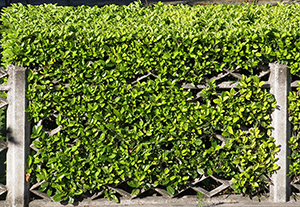Get Involved (Doing your Bit)
We are working to meet the challenge of reducing airborne pollutants PM2.5, PM10 and NO2 set by the Government, but success will also require a dedicated public effort with each person doing their bit by active travel planning, using alternative modes of transport and other targeted actions. This can have other additional benefits as participants will be fitter and healthier by choosing to walk or cycle more regularly.
Air quality leaflet
Our air quality action plan steering group, together with NHS Hampshire, has published a leaflet ![]() (974 KB) on the subject of poor local air quality. It lets you know how you can help reduce local air pollution by thinking about more sustainable forms of transport such as walking, cycling, taking public transport or car sharing. If you would like a copy please contact regulatory@fareham.gov.uk.
(974 KB) on the subject of poor local air quality. It lets you know how you can help reduce local air pollution by thinking about more sustainable forms of transport such as walking, cycling, taking public transport or car sharing. If you would like a copy please contact regulatory@fareham.gov.uk.
What can I do to reduce air pollution?
Before using your car, ask yourself:
- Do I really need to make this journey?
- Could I walk or cycle instead of taking the car and get fitter at the same time?
For more information on cycling routes, see the journey planner on the Cycling UK website  .
.
Through the Sustrans website you can obtain advice on UK safe cycling routes and general supportive information.
you can obtain advice on UK safe cycling routes and general supportive information.
For more information on walking see our promoting walking webpage. Fareham Walking for Health  is an accredited Healthy Walk scheme with Ramblers Walking for Health. Their walks are led by trained volunteer walk leaders.
is an accredited Healthy Walk scheme with Ramblers Walking for Health. Their walks are led by trained volunteer walk leaders.
- Could I take a bus
 or train?
or train? - Are the levels of air pollution already too high today?
- Could I car share?
Many car journeys only have one occupant. Consider car share  for the journey to work and reduce your costs.
for the journey to work and reduce your costs.
- Could you use a less polluting car?
When buying a new car consider one that is more efficient and lower polluting  . With increasing fuel costs and lower car tax, electric cars could save you money to run. Most of the main car manufacturers now produce either pure electric cars or hybrids. Range has always been a concern but most pure electric cars will now travel more than 200 miles between charges. The network of charging points
. With increasing fuel costs and lower car tax, electric cars could save you money to run. Most of the main car manufacturers now produce either pure electric cars or hybrids. Range has always been a concern but most pure electric cars will now travel more than 200 miles between charges. The network of charging points  are rapidly increasing reducing 'range anxiety'.
are rapidly increasing reducing 'range anxiety'.
My Journey Hampshire
The My Journey team work to promote active and sustainable travel in schools, colleges, communities and workplaces to improve health, fitness and protect the environment. The My Journey Hampshire website is designed to be a one stop destination for travel information and advice in and around Hampshire. It provides advice on alternative methods of transport to the car such as walking, cycling, taking public transport, working from home and car sharing. In partnership with district environmental health departments, the team run a Clean Air Project which supports selected schools and colleges to undertake air quality investigations and plan campaigns to reduce air pollution. More information and useful resources may be found on the MyJourneyHampshire /education and MyJourneyHampshire/workplaces websites.
What can I do at home?
- Compost garden waste & kitchen waste
Having garden bonfires causes particulate pollution. Try composting any garden or appropriate household waste.
- Green infrastructure
If you live near or on a busy road then the chances of the air pollution around your home being worse are higher. Vegetation can play an important part in removing air pollutants produced by vehicles and therefore reducing your exposure to those pollutants.
If planted between yourself and the source of the pollution (i.e. a busy road) the leaves and materials of vegetation can trap (deposition) and help disperse (dispersion) air borne pollutants, which then dilutes the polluted air with cleaner air from the surroundings.
The vegetation can be in the form of a hedge, a tree or even bedding plants, but remember the thicker and the closer together the vegetation the better it will be at cleaning the air.
Plants that can create a thick barrier and have a large surface are best large such as Common Ivy (Hedera Helix) and Chinese Juniper (Juniperus Chinensis); also plants with hairy surfaces like Lamb's-ear (Stachys Byzantine) aid in trapping pollutants.
A good vegetation barrier can as much as halve the levels of pollutants just behind the barrier!
